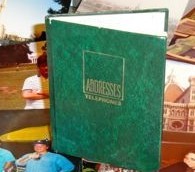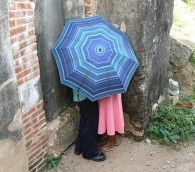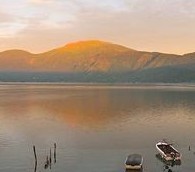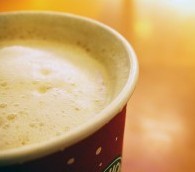Tag: Global Village
American Religion, Eastern European Identity
by Pam Mandel | 07.29.14 | 11:04 AM ET
I love stories about complicated cultural identity issues. What’s at the intersection of religion and nationality? What happens when you add ethnicity to that question? How do people who find themselves in two not-quite-compatible subcultures reconcile the conflicting ideas, not just in their society, but within themselves? That’s why I liked this somewhat academic read about how some Armenians and Georgians are adopting American Evangelical religions—and struggling with the implications of what it means to leave traditional Orthodoxy behind.
From The rise of Mormons and Jehovah’s Witnesses in the Caucasus:
But the biggest challenge for those seeking to convert others may be reconciling converts’ faith with their ethnic identity. Many of Pogosyan’s countrymen see those who leave the Apostolic Church as less Armenian. He takes pains to emphasize the long-standing relationship between Armenia and the LDS church, which first took hold in the Armenian diaspora in 19th-century Constantinople, as well as the increasing number of foreign missionaries of Armenian descent who have come to their ancestral homeland to serve. He is also careful to stress the cultural similarities between Armenia and the LDS church. “We’re very big on family values in Armenia,” he says, making the LDS church here a perfect fit. Ultimately, his faith has made him more Armenian, not less. It has strengthened his relationship with his family, his local community. “It has made me a better citizen.”
Read the entire story here.
Pico Iyer on Japan’s ‘Sadness That Will Not Go Away’
by Michael Yessis | 12.29.11 | 7:46 AM ET
Like Daisann McLane in her three-part series about Japan in the wake of its triple disaster, Pico Iyer has captured a haunting snapshot of life in the country post-earthquake and tsunami. He writes for Businessweek:
When I went up to the area around the nuclear plant in October, I found myself staying in, of all places, a golf resort by the sea. Many of the locals had left the area after the disaster, I was told. When I arrived, late at night, the big hotel looked like a ghost town. Only a handful of kimono-clad guests seemed to be enjoying the tea lounge and the play area.
Next morning, I awoke early and went into the breakfast room at 6:15—to find every table packed. Dapper golfers from Tokyo were busy scarfing down their eggs, about to head out for their first round, undeterred by pelting rain and the belching factories that surround the seaside course. In some places this could look like recklessness or indifference; in Japan it seemed to stand for fortitude.
(Via @gary_singh)
Food as Instructive Historical Document
by Michael Yessis | 10.14.11 | 11:48 AM ET
Felipe Fernández-Armesto, author of the excellent Pathfinders: A Global History of Exploration, looks at how food illuminates history. From the Asia Literary Review:
When the tides of empire ebb, returnees and counter-colonists travel with them. So Britain has become, in the post-colonial era, a springboard for the worldwide projection of Indian food. The Netherlands has played a similar role for Malay dishes and France for those of the Maghrib and Vietnam. In the same period, globalisation, long-range mass tourism and worldwide migrations have demonstrated that the West is highly receptive to exotic innovation, while beyond the Middle East, the peoples of the eastern and southern extremities of Asia are far harder to wean onto alien cuisines.
McDonald’s and Starbucks buck this trend - though one doubts whether their popularity has much to do with their food. Their customers in India, Japan and China seem rather to be choosing a “lifestyle option”. In the West, by contrast, even the most introspective food cultures - those of France, Spain and Italy - have failed to resist the intrusion of cuisines with which they have few or no imperial links, such as those of Lebanon, Thailand, Japan and Turkey, from where the kebab has become a global rival to the burger and the burrito. Western food has registered no comparable counter-coups - apart, arguably, from the Irish pub, which seems to be a concept with an infinitely elastic range - although I hear there is a Bauernstube in Beijing and one of the best views of Tokyo is to be had from The Peak Lounge at the Park Hyatt Hotel, which bills itself, rather unconvincingly, as an English tea lounge.
Travels Through the Wreckage of Japan’s ‘Triple Disaster’
by Michael Yessis | 09.02.11 | 7:59 AM ET
World Hum contributor Daisann McLane’s Well-Traveled dispatches about her travels to Sendai, Fukushima and Tokyo four months after the 9.0 earthquake, tsunami and nuclear disaster struck Japan has concluded at Slate. It’s an amazing series, powerful and heartbreaking and beautifully written. From the first of three parts, Sendai Rising From the Wreckage:
Even after four months, it’s a mess of Augean proportion: uprooted pine trees, splintered wood beams, crumpled abandoned cars, wooden fishing boats tipped on their side, trying to sail away on a sea of mud. Your first reaction is to throw up your hands in desperation—how on earth do you begin cleaning this up? But the Japanese have passed that shock stage, and have whipped themselves into action: a squadron of earth movers is busy, steadily organizing the endless wreckage into tidy haystack-like hills. “This was the town of Natori.” Akawa-san points over to a spot on the eastern, coastal side of the highway. There’s nothing there but a solitary house without walls, its soggy furnishings and books spilling out the way junk tumbles from an overstuffed closet.
McLane, whose extraordinary writing career has ranged from contributing to Rolling Stone during its heyday to her current spot as the Real Travel columnist for National Geographic Traveler, explained how writing about the triple disaster affected her in an email to friends and colleagues:
The experience overcame me. Those of you who are writers, photographers and editors will understand: Sometimes you find yourself in the middle of an extraordinary story that makes you want to write your heart out. This was one of them.
Ai Weiwei’s Beijing
by Michael Yessis | 08.30.11 | 12:37 PM ET
The Chinese artist has broken his post-detention silence in a piece for Newsweek. He writes of Beijing:
I feel sorry to say I have no favorite place in Beijing. I have no intention of going anywhere in the city. The places are so simple. You don’t want to look at a person walking past because you know exactly what’s on his mind. No curiosity. And no one will even argue with you.
None of my art represents Beijing. The Bird’s Nest—I never think about it. After the Olympics, the common folks don’t talk about it because the Olympics did not bring joy to the people.
There are positives to Beijing. People still give birth to babies. There are a few nice parks. Last week I walked in one, and a few people came up to me and gave me a thumbs up or patted me on the shoulder. Why do they have to do that in such a secretive way? No one is willing to speak out. What are they waiting for? They always tell me, “Weiwei, leave the nation, please.” Or “Live longer and watch them die.” Either leave, or be patient and watch how they die. I really don’t know what I’m going to do.
Pakistanis Don’t Approve of U.S., but They Love its Fast Food
by Michael Yessis | 07.25.11 | 12:11 PM ET
The new Hardee’s in Islamabad is wildly popular. McDonald’s expanded to home-delivery. A sports bar serving chicken wings—though not beer—just opened. Nicolas Brulliard explains what’s going on:
Nowhere is Pakistanis’ love of American fast food more apparent these days than at the newest Hardee’s. A few days after a much-hyped opening attended by U.S. Ambassador Cameron Munter and his wife, lines of customers still extended outside the doors. Nawaz Sadiq, manager for development and training at Hardee’s, said the outlet has served an average of 5,000 to 6,000 customers a day so far.
“The Pakistani market is very much brand-conscious,” Sadiq said. “Pakistani people are against America because of its policies, but at the same time, people want quality.”
Unlike in the United States, fast food here is among the more expensive eating-out options. At 390 Pakistani rupees, or about $4.50, a Big Mac is out of reach for most people. Consequently, many customers are part of Pakistan’s highly educated class and have spent time in the United States, or have at least more favorable opinions of the United States than most of their countrymen.
China Beyond its Borders
by Michael Yessis | 06.17.11 | 11:08 AM ET
Caught up with NPR’s series about the ways China is asserting itself throughout the world. It’s excellent. The latest piece looks at Italian response to the changing textile scene in Tuscany, “home to the largest concentration of Chinese residents in Europe.”
Sylvia Poggioli says:
On Via Pistoiese, shops are Chinese—hairdresser, hardware store and supermarket. There are few Italians. It’s 2 p.m. and all shops are open—there’s no time for siesta in Chinatown.
Vanished Friends, Love Lost and My Old Address Book
by Jeffrey Tayler | 01.20.11 | 11:45 AM ET
Jeffrey Tayler found a relic from his first trip overseas. It brought back a flood of memories -- and regrets.
‘Try to Think of a World Before the Railway’
by Michael Yessis | 01.06.11 | 1:36 PM ET
Imagine “the meaning of distance and the impediment it imposed when the time it took to travel from, for example, Paris to Rome—and the means employed to do so—had changed little for two millennia,” writes the late Tony Judt in a terrific two-part piece in the New York Review of Books.
Above all, think of how different the world looked to men and women before the coming of the railways. In part this was a function of restricted perception. Until 1830, few people knew what unfamiliar landscapes, distant towns, or foreign lands looked like because they had no opportunity or reason to visit them. But in part, too, the world before the railways appeared so very different from what came afterward and from what we know today because the railways did more than just facilitate travel and thereby change the way the world was seen and depicted. They transformed the very landscape itself.
Not to mention train travel’s impact on literature.
The Sexual Lives of Sri Lankans
by Hannah Tennant-Moore | 12.17.10 | 1:56 PM ET
After a month of catcalls and groping, Hannah Tennant-Moore wonders what she's doing alone with a masseur
‘Travel Makes You a Buddhist’
by Michael Yessis | 12.09.10 | 2:59 PM ET
Matt Gross has lost many things on the road: a waxed-cotton newsboy, umbrellas, his security blanket. Here’s what he’s learned from the disappearing objects:
Recently, I wrote about how you sometimes need to be a Zen Buddhist to survive the discomforts of travel. Well, it works the other way, too. Travel makes you a Buddhist, teaching you that attachments are, all too often, only temporary. A scarf left on a Portuguese beach, a new Tunisian friend whose e-mail address proves unreadable—they come and they go.
But of course, they never go completely. We remember them: how gently they caressed our neck—the scarf, I mean—and they survive, like all the really important things that happen to us when we travel, as memories.
Christopher Buckley: ‘I Was Deck Boy Aboard a Norwegian Tramp Freighter’
by Michael Yessis | 11.15.10 | 4:33 PM ET
In 1970, Buckley shipped out for a year of adventure. His remembrance in the Atlantic is beautiful:
I remember standing in the crow’s nest as we entered the misty Panama Canal, and the strange sensation as the 4,000-ton ship rose higher and higher inside the lock. I remember dawn coming up over the Strait of Malacca; ragamuffin kids on the dock in Sumatra laughing as they pelted us with bananas; collecting dead flying fish off the deck and bringing them to our sweet, fat, toothless Danish cook to fry up for breakfast. I remember sailing into Hong Kong harbor and seeing my first junk; steaming upriver toward Bangkok, watching the sun rise and set fire to the gold-leafed pagoda roofs; climbing off the stern down a wriggly rope ladder into a sampan, paddling for dear life across the commerce-mad river into the jungle, where it was suddenly quiet and then suddenly loud with monkey-chatter and bird-shriek, the moonlight lambent on the palm fronds.
Passports With Purpose Turns Three
by Eva Holland | 11.15.10 | 3:18 PM ET
The travel-blogging fundraiser is back. Last year, World Hum contributor Pam Mandel and her fellow Passports co-founders raised enough money to get a school built in Cambodia—and helped inspire us to name travel bloggers, collectively, as our 2009 travelers of the year.
This year Passports With Purpose has its sights set on raising $50,000 to build a village in India. Check out the Passports With Purpose site to learn more about blogging the effort, becoming a sponsor or bidding on the many travel-themed prizes.
Tour Guide Battle in Southern California Leaves Chinese ‘Very Afraid’
by Michael Yessis | 11.10.10 | 1:02 PM ET
Chinese tourists are increasingly bringing their own guides when they travel to Southern California. Local guides are pissed about losing business and, allegedly, becoming confrontational. The Los Angeles Times breaks it down:
Wang Suqi, president of Beijing-based Total Travel International Travel Service, claims that one of his tour leaders was punched by an American tour guide at Universal Studios Hollywood, and now his tour leaders have asked to be transferred to different tours in Europe and Southeast Asia.
“They’re very afraid,” Wang said. “Even our customers are asking what’s going on.”
The competition for the Chinese tourism business was set off in 2007 when China, for the first time, allowed commercial travel agents to book group pleasure trips to the U.S. But China did not mandate that Chinese tourists hire accredited American tour guides—a requirement that China imposed on other countries, including Vietnam, Cambodia and Thailand.
Of course, it’s mostly about money. Chinese travelers have been unleashed in recent years, and they spend.
In 2009, Chinese travelers spent an average of $6,800 per person per visit, including airfare, according to the U.S. Commerce Department. By 2020, China will become the world’s fourth-largest source of tourists, the United Nation’s World Tourism Organization predicts.
Lightning Flashes in El Salvador
by Tracy L. Barnett | 10.27.10 | 10:02 AM ET
Tracy L. Barnett stepped off a bus, checked into a luxury resort and learned something about the indifferent forces of nature
The Quiet Traveler
by Sophia Dembling | 10.22.10 | 12:09 PM ET
Sophia Dembling doesn't travel to meet people. She finds other rewards.
See the full audio slideshow: »
A Cup of Coffee and a Soft Chair
by Joel Carillet | 10.14.10 | 1:58 PM ET
After 14 months traveling overland from Beijing to Istanbul, Joel Carillet faced a gingerbread latte -- and a series of unexpected fears
Thoughts From the Amerika Section of a German Grocery Store
by Terry Ward | 10.11.10 | 11:01 AM ET
Amid the Cheese Zip and the Marshmallow Fluff, Terry Ward remembers what it means to be American
Why Expats and Migrants Don’t Truly Eat Like Locals
by Michael Yessis | 09.29.10 | 11:30 AM ET
A study suggests loyalty to the foods, flavors and brands of our youth is quite strong. From the Economist:
But 16% of people studied were migrants: they had grown up in one state and moved to another. They had the same options, in terms of what was on offer and at what price, as everyone else in their adopted home. But although they consumed more local favourites than someone in their native state would have, they bought fewer local hits (and more of the favourites from back home) than a longtime resident. And this gap between the purchases of migrants and that of the locally born was quite stubborn: although it faded the longer a person lived in their new state, it still took 20 years to halve in magnitude. Even 50 years on, it was still large enough to show up in the data.
(Via The Morning News)
National Geographic: Now Available in Arabic
by Eva Holland | 09.27.10 | 3:32 PM ET
The venerable magazine is launching an Arabic-language edition this week. Speaking to the AP, the new edition’s editor, Mohamed al-Hammadi, “expressed hope it would give Arab readers a deeper understanding of the planet and how others live.” (Via The Book Bench)
- « Prev Page
- Next Page »





